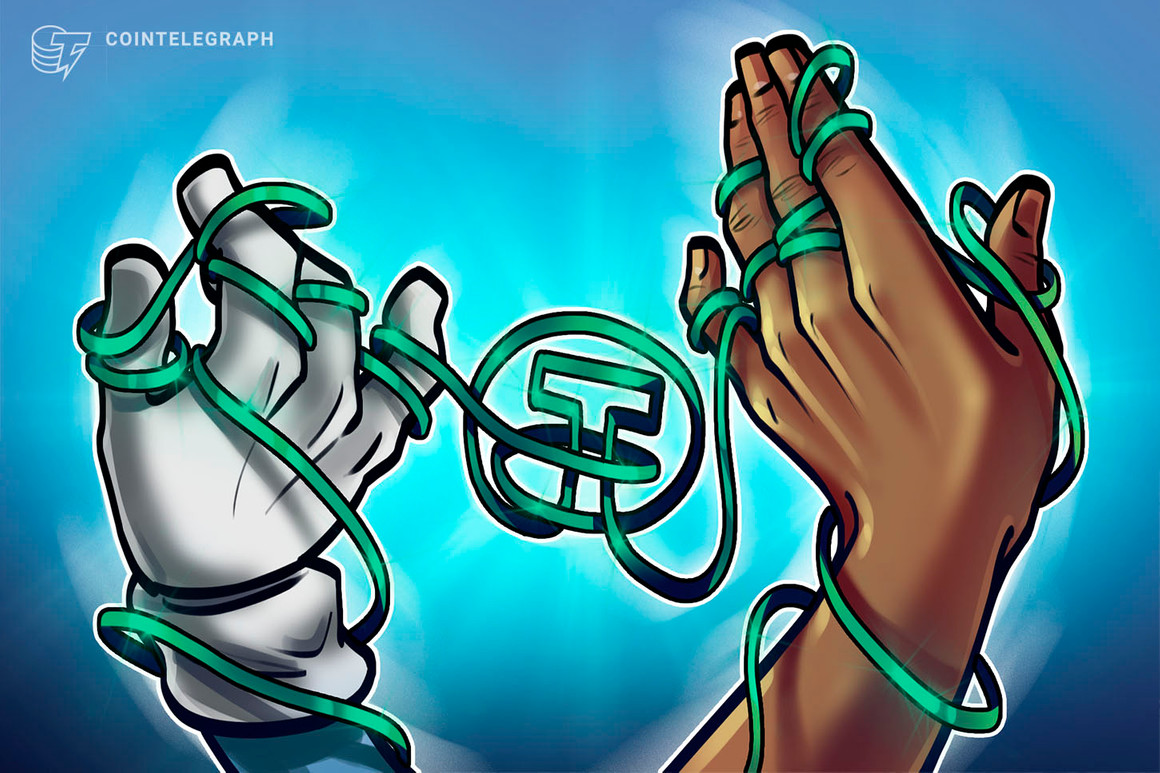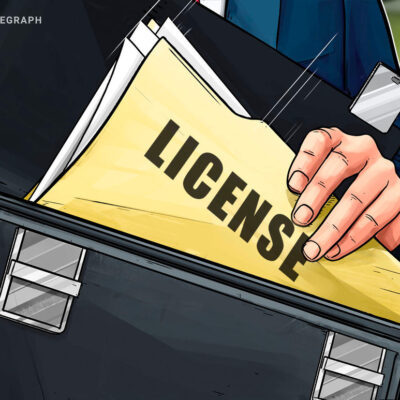The stablecoin market has been growing exponentially, and last week, Eric Rosengren — president of the Federal Reserve Bank of Boston — appeared to raise a cautionary flag.
“There are many reasons to think that stablecoins — at least, many of the stablecoins — are not actually particularly stable,†he said in remarks before the Official Monetary and Financial Institutions Forum, voicing concerns that “a future [financial] crisis could easily be triggered as these become a more important sector of the financial market, unless we start regulating them.â€
Moreover, in an accompanying slide presentation, the bank CEO referenced Tether (USDT), the dominant stablecoin issuer, noting that its basket of reserve assets looks very much like a “very risky prime fund†— the sort that got into trouble in the last two recessions.
Was Rosengren right to call out Tether by name for its reserve assets, which include commercial paper, corporate bonds, secured loans and precious metals? Could the parabolic growth of stablecoins truly destabilize short-term credit markets, and would the stablecoin sector be better served by more rigorous reserving and auditing?
Also, given that Tether by far remains the dominant player in the global stablecoin market, what would happen if it falters — could it bring down the larger crypto market along with it? As the chart below used in Rosengren’s presentation shows, stablecoin market capitalization relative to prime money market mutual funds under management now exceeds 20%.

Francine McKenna, adjunct professor at American University’s Kogod School of Business, understands Rosengren’s concern. She told Cointelegraph that these new stablecoin funds are, in a sense, “interlopers†in the traditional short-term credit markets and that the Boston Fed president and his peers could be realizing that “suddenly we don’t have our fingers on all the levers.â€
Stablecoins run the crypto market?
Stablecoins are affecting short-term credit prices now, but these instruments could just as quickly exit the market. In mid-June, a “run†on the Iron Finance protocol, for instance, caused the price of its IRON stablecoin to move off peg and crushed its native token, TITAN, by almost 100%, impacting investor Mark Cuban among others.
Rohan Grey, assistant professor at Willamette University College of Law, told Cointelegraph that if Tether collapses, it could have dire effects on the cryptoverse:
“Tether is still one of the most widely traded asset pairs for almost every other crypto, and provides a huge amount of liquidity to the sector. So yes, a crash in Tether would have significant knock-on effects for the rest of the ecosystem.â€
Circle and a few other stablecoins have begun to take market share from Tether, “So it’s definitely possible that some other stablecoin will step into the breach, but even without Tether, the rest of the crypto industry remains built on a foundation of stablecoins,†he added.
Controversy has dogged USDT through much of its short history, and in February, Tether and its Bitfinex affiliate agreed to pay the state of New York $18.5 million for misrepresenting the degree to which USDT was backed by fiat collateral.
“Tether’s claims that its virtual currency was fully backed by U.S. dollars at all times was a lie,†said New York State Attorney General Letitia James when announcing the settlement, which also requires Tether and Bitfinex to submit mandatory quarterly reports on USDT reserves — the first of which was summarized in Rosengren’s slide deck.
Not all were reassured by the March USDT report, however. The fact that commercial paper accounted for half (49.6%) of assets was a particular eyebrow-raiser. “The fact that Tether is holding so much corporate paper and corporate bonds is a huge issue,†Grey told Cointelegraph, adding: “No one knows what it is, and it’s completely at odds with their claim for years that they were only invested in cash or cash-like assets.â€
A “cash equivalent†has to be something especially “liquid with no market uncertainty,†McKenna explained to Cointelegraph: “Commercial paper is not generic. There are all sorts of commercial paper.†She said that it’s not like the old days when people said that General Electric’s commercial paper was “as good as gold.†Today, “You have to see who the issuer is.â€
“USDT has been a big question mark since its inception,†Sidharth Sogani, founder and CEO of research firm Crebaco, told Cointelegraph. If Tether is investing assets in something other than U.S. dollars, then what happens if those assets — e.g., precious metals or corporate bonds — fall in price? “Will USDT lose its value?†Also, how are earnings being distributed? Tether’s users presumably own the bonds and commodities backing the stablecoin, “So the interest earned is the users’ right,†said Sogani.
Not everyone has a problem with Tether pegging its token to a basket that includes commercial paper, however. “To my mind there is nothing inherently wrong with a stablecoin — USDT or not — holding or being backed by commercial paper, as opposed to being 100% backed by a specific fiat currency,†Sean Stein Smith, assistant professor in the Department of Economics and Business at Lehman College, told Cointelegraph.
That said, Stein Smith acknowledged potential “complications†that could arise — a “run†on the stablecoin could destabilize a specific tranche of the commercial paper market, for example. Or conversely, if the commercial paper market “seized up,†it could disrupt redemptions of that particular stablecoin.
Better auditing?
Would a regular audit of Tether’s reserves by a Big Four accounting firm improve its standing regarding the “backing†question? “Regular auditing would absolutely help,†said Stein Smith, “both in raising the confidence in the backing of USDT, and creating crypto-specific standards that could be adopted by other stablecoin issuers going forward.â€
But others aren’t so sure. USD Coin (USDC), the second leading stablecoin, has Grant Thornton LLP confirm that it has sufficient U.S. dollar reserves every month, for instance. This is often cited as a better approach, but even this has serious limitations, in McKenna’s view. All that is really happening, McKenna explained, is a monthly verification of the issuer’s bank balance. Two minutes after the auditor examines the bank statement, the stablecoin issuer could simply transfer funds elsewhere.
What’s the answer then? According to Mckenna, it’s escrow accounts — i.e., “segregated client funds like broker/dealers are required to have.†In any event, “There are lots of ways to tie up money so it can’t be touched.â€
Elsewhere, another sticking point for people is the fact that according to Tether itself, only 2.9% of USDT’s asset backing is in cash, which has led some to say that Tether is acting like a bank — but without being subject to a bank’s heavy regulation.
“It is pretty clear looking at the makeup of the reserves — a tiny proportion of the reserves are cash on account at banks — that Tether is operating like a bank but with none of the normal disclosure,†Martin Walker, director of banking and finance at the Center for Evidence-Based Management, told the Financial Times.
Meanwhile, all the publicity about reserves probably isn’t helping the stablecoin attract new users. According to CoinMarketCap, USDT’s market capitalization has barely budged over the past month. With U.S. dollar-backed stablecoins, market capitalization is a good proxy for total supply because each coin is very close to $1.00. Meanwhile, USD Coin and Binance USD (BUSD), Tether’s closest competitors, have both increased their market cap substantially during this period — 10% and 12%, respectively, since the start of June.
Cointelegraph invited Tether/Bitfinex to comment on the idea that it seems to be losing ground to its competitors but did not receive a response.
What if USDT faltered?
There is no sign of any imminent USDT collapse, but given Tether’s continuing market dominance, such an event is often a topic of conversation — as a matter of speculation. Sogani told Cointelegraph:
“The BTC/crypto pairs would be sustained, but still there would be a bloodbath. I believe the market would lose between 10 to 15% — USDT circulating supply is $64 billion right now — in market cap and a sudden correction of up to 35% could be seen if USDT collapses as it would trigger a panic.â€
Stein Smith, by contrast, doesn’t agree that stablecoins generally, or USDT specifically, represent much of a threat to financial stability or the crypto ecosystem. “If stablecoins truly did pose a global systemic risk, why are so many central banks experimenting and deploying central bank digital currencies — which are at a basic level government issued-stablecoins,†he said, adding:
“If Tether collapsed there would certainly be some volatility and headlines foretelling the ‘end of crypto,’ but it would not crash the entire sector.â€
STABLE Act needed?
Elsewhere, stablecoin regulation could be coming, at least if certain initiatives prove successful. “It is important that when a fiat-currency-pegged stablecoin is issued that it is regulated,†said Sogani, “or else it is like creating value out of thin air to keep buying more crypto, especially Bitcoin. Since stablecoins are centralized in most cases, strict regulations must be in place because of lack of transparency.â€
The stablecoin market is fragmented globally, too, as different organizations have their own stablecoins, and many stablecoins are available on multiple chains. USDT, for example, is available as an ERC-20 token on Ethereum, a TRC-20 token on Tron and a BEP-20 token on Binance Smart Chain and can also be used via the Omni Layer on Bitcoin (BTC), which makes auditing more difficult.
“Stablecoin is essentially unregulated free banking that issues deposits. However, free banking never worked in the past, even in cases where the government required backing,†Yale University finance professor Gary Gorton recently presented along with his opinion that “There needs to be credible backing for Stablecoin as they are now runnable without any entity overseeing them.â€
“The sector could profit from more regulation,†Willamette University’s Grey told Cointelegraph. Grey helped draft the Stablecoin Tethering and Bank Licensing Enforcement (STABLE) Act, which was introduced in the United States House of Representatives in December 2020. The STABLE Act would, among other things, require U.S. stablecoin issuers to obtain bank charters and prior approval from the Federal Reserve, the Federal Deposit Insurance Corporation and the appropriate banking agency in their jurisdiction.
All in all, stablecoins have exploded recently, and as a result, they are attracting more attention from financial regulators. Tether sits at the top of the stablecoin pyramid, but questions remain about whether all fiat-based stablecoins are really pegged one to one, said McKenna. “If I need cash to honor redemptions or pay taxes am I going to get dollar for dollar?â€
After all, when money market funds “broke the buck†during the 2008 financial crisis — i.e., when their net asset value fell below $1 — it was because those funds had invested in derivatives, commercial paper and other suddenly illiquid assets. McKenna concluded: “Yes, there are enormous reasons for the Fed and its presidents to be concerned.â€






